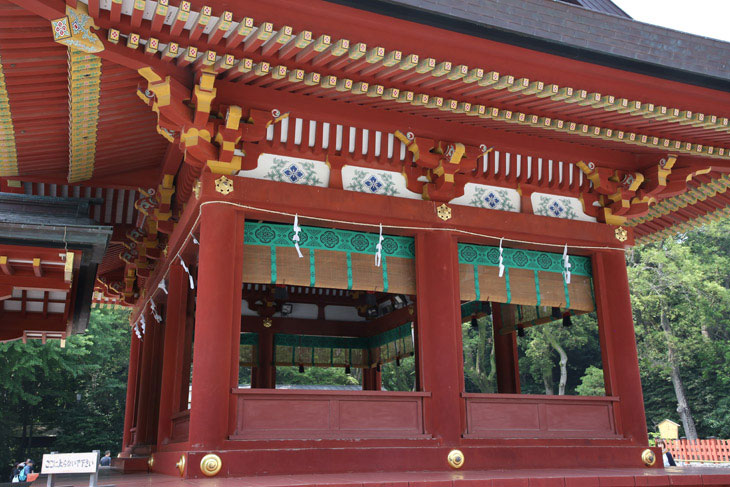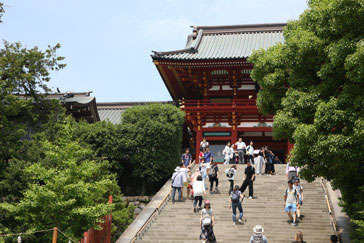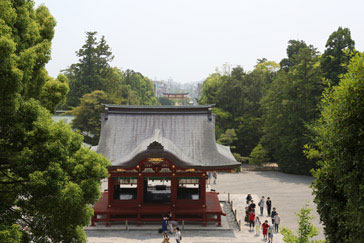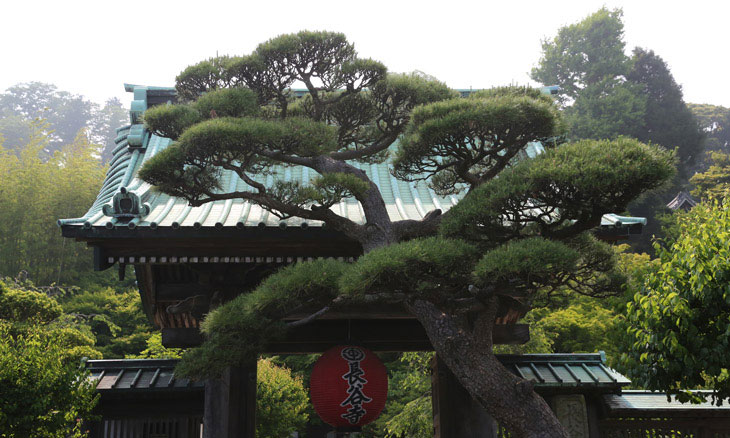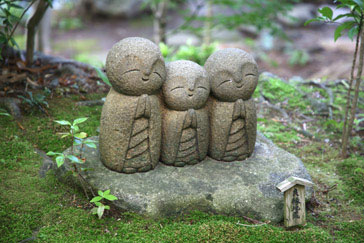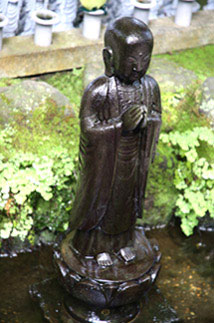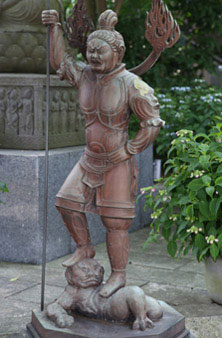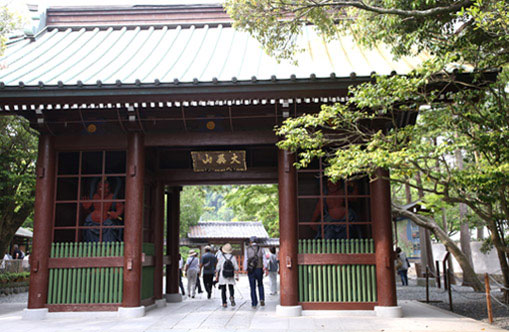Childhood Dreams
Kamakura
On a hot, hazy and humid day we decided to venture off to Kamakura, one of the places we wanted to
re-visit on this trip. When we paused for a moment inside Tokyo Station to determine the location of
the correct train platform, we were immediately approached by a young, enthusiastic JR employee who
asked if we needed help. She pointed us in the right direction, and about an hour later we disembarked
at the familiar looking station.
We wandered around a bit until we found the long walkway which leads to Tsurugaoka Hachimangu -
the most important Shinto shrine in a city bursting with shrines and temples. It was originally
established by Minamoto Yoriyoshi in 1063 when he returned to Kamakura to give thanks after successfully
supressing a rebellion of the clans in North East Japan.
The walkway leading to the shrine begins at the waterfront and stretches 1.1 miles This is one of the
3 torii gates along the path.



We entered the walkway at the middle gate. The picture on the left is looking towards the waterfront.
The picture on the right looks toward the shrine.
The Taiko-Bashi Bridge sits at at entrance to the shrine. In the days of the Kamakura shogun, there
was a red wooden bridge on this spot that was believed to connect the world of people on earth and the
world of the kami.


There are 2 ponds just past the bridge. The one to the left represents the Taira clan and the one on
the right represents the Minamoto clan. Since the shrine was built by the Minamoto clan and since the
two clans were rivals, there is a bit of somewhat dark symbolism here. The Taira pond has four islands,
and the character for four has the same sound as the character for death. Conversely, the Minamoto pond
has three islands, and the character for three has the same sound as the character for birth. Also, the
Minamoto pond is full of white lotus flowers (the clan color) and the Taira pond has red lotuses. The
red, in addition to being their clan color, is also said to represent their spilled blood.
It was too early in the season for the flowers to be in bloom so on this day so the ponds looked much
the same. I believe this is the Taira pond.
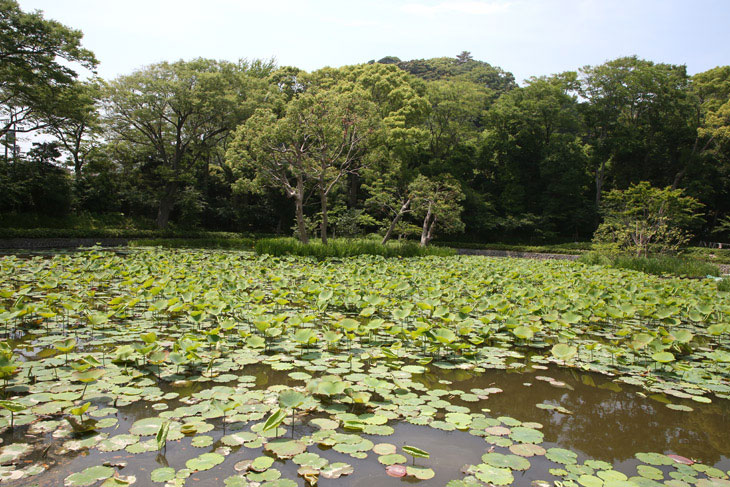
When we visited in 2005, a wedding was being held in this open pavilion. Dances and music are also
performed here on occasion, but on this day it was quiet.
On the left is a picture of Omikuji (fortune telling paper slips) glittering in the sun.
On the right is a picture of the stump of a 1000 year old ginkgo tree that was uprooted during a big
storm in 2010. Fortunately, the stump is showing signs of rejuvenation.
There are still 60 steps to climb to reach the main shrine building. From the top, you can see the
beginning of the long walkway far in the distance.
These are Omikoshi (portable shrines) carried during festivals.
After a stop for some much needed liquid refreshment, we returned to the train station and decided
to take the Enoshima Electric train that travels through the area to Hase Station. We joined the
crush of people moving slowly up the street to Hasedera (Hase Temple) which is famous for its eleven
headed statue of Kannon, the goddess of mercy.
This cool shady pool just inside the entrance was a welcome sight.
We followed the shady path up the mountain through the woods to the place where rows and rows of
Jizo statues stand. The statues are placed there by parents who are mourning the loss of babies
due to miscarriage, stillbirth or abortion. Sadly, considering the souls they represent, there
are hundreds of Jizo statues on the temple grounds, and old ones are replaced with new ones
periodically. By one estimate, 50,000 statues have been placed since World War II.
You are not permitted to take pictures of the Kannon statue or the Amida Buddha which is also
housed in this building. These are some of the other statues on the temple grounds and the bell
which is rung 108 times each New Year's Eve to dispel the 108 sufferings of humanity.
There is also a viewing platform that looks out over the sea and the town. On this day a welcome
breeze blew in from the sea.
After leaving Hasedera, we merged once again with the milling crowds on the street and made our
way slowly to Kotoku-in where the Great Buddha of Kamakura is located.
The statue, cast in 1252, is the second tallest bronze Buddha in Japan. It has been standing in the
open ever since the temple building that once housed it was destroyed by a tidal wave in 1498.
It had been a lovely albeit exhausting day. Time to return to Tokyo and relax over dinner and a cold
beer. The streets of Kamakura were much more crowded than they had been in 2005, and the trains were
packed with people.
When we finally arrived back at Tokyo Station, we were amazed to see that the young woman who had
given us directions in the morning was still standing in the same spot and she still had a smile on
her face.








